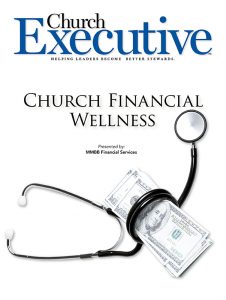
![]() By Colin E. Nass, CFP®, AEP®, RICP® & James R. Cook, CFP®
By Colin E. Nass, CFP®, AEP®, RICP® & James R. Cook, CFP®
Retirement savings plans, such as the 403(b) plan, offer benefits to both employees and employers
First, let’s look at how employees can make the most of a 403(b) plan.
For many, saving for retirement is one of the largest goals we will need to fund. When saving for any large goal, the key is to start saving as soon as possible and as frequently as possible. For a goal like retirement, savings made through a workplace plan like a 403(b) plan can be an efficient way to build a retirement nest egg.
So, what is a 403(b) plan?
It is a retirement plan offered by public schools and tax-exempt organizations such as churches, hospitals and charitable organizations. These plans offer employees an efficient, cost-effective way to save for retirement and are similar to 401(k) plans maintained by a for-profit entity.
Just as with a 401(k) plan, a 403(b) plan lets employees defer a portion of their salary into individual accounts. The deferred salary is generally not subject to federal or state income tax until you make withdrawals at retirement. The main difference is that 403(b) plans can only be offered by organizations exempt from federal income tax, such as public schools, and including colleges and universities, non-profit hospitals and healthcare agencies, charities and religious organizations.
For employers, offering the right benefits can help you attract and retain the best employees. Benefits such as 403(b) plans, offered through an employer-sponsored plan, far exceed what an individual could accumulate saving on their own through an IRA, especially when you factor in the potential for employer contributions and higher employee contribution limits than traditional IRAs.
A major advantage of a 403(b) plan is the generous contribution limit. Employees can make pretax salary deferrals up to $18,500 per year (for the 2018 tax year). If you’re age 50 or order, you can defer an additional $6,000 catch-up contribution for a total of $24,500 or 100% of your compensation, whichever is less. Deferrals are subject to Social Security and Medicare taxes, but not federal income taxes. Employers may choose to make contributions to their employees’ accounts, making it even easier to save.
With 403(b) plans, employees may take loans or hardship distributions. However, under the age of 59 1/2, early withdrawals are subject to a possible 10% penalty.
A 403(b) plan offers several retirement savings benefits:
• Contributions to the plan are tax-deductible.
• Savings grow tax-free.
• Taxes are paid only on distributions when many retirees are in a lower tax bracket after retirement.
• Plans allow for employer contributions or employer matching contributions that can lead to increased retirement savings.
• Most plans offer flexible investment options, such as the ability to invest in mutual funds through custodial accounts.
• Some plans offer a combination of mutual funds and annuities.
To maximize retirement savings benefits, begin contributing as soon as possible and as frequently as possible. A good strategy to use is to set up an automatic salary

reduction plan through your employer.
For employers, offering the right benefits can help you attract and retain the best employees. Benefits such as 403(b) plans, offered through an employer-sponsored plan, far exceed what an individual could accumulate saving on their own through an IRA, especially when you factor in the potential for employer contributions and higher employee contribution limits than traditional IRAs.
What is the benefit of offering a 403(b) plan?
Structuring a plan that your employees see as valuable is key. In general, there are three types of contribution strategies. Each employer must decide which one best fits their organization and budget.
• Non-elective employer contributions: These contributions are made by the employer without a matching requirement. The employer contributes regardless of whether the employee elects to make contributions.
• Elective deferral/salary reduction contributions: These are pre-tax contributions that employees make as either a percentage or fixed dollar amount each pay period.
• Matching contributions: These are employer contributions that are made based on an employee’s elective deferral. For example, an employer may match dollar for dollar the first 3% of every dollar an employee contributes. Thus, if an employee elects to save 5% of his/her salary, the employer will match at 3%, resulting in a total contribution of 8%.
Employers can use any combination of contributions, but the goal should be to encourage employee participation that results in a healthy savings rate.
If an employer elects to offer a generous retirement plan that includes employer contributions, there might be a concern about losing that investment if the employees leave the organization. This is where vesting comes in.
Vesting requires an employee to be employed for a defined period of time before they can claim ownership of an employer’s contributions to their retirement account.
The IRS has specific requirements for the application of a vesting schedule. Two examples of a vesting schedule are: Two-Year Cliff Vesting and Six-Year Graded Vesting.
With Two-Year Cliff Vesting, if an employee leaves the organization before completing 24 months of employment, the portion of their retirement account resulting from the employer’s contributions are forfeited and remain with the employer.
Six-Year Graded Vesting occurs when an employee becomes the owner of an increasing percentage of the employer contributions each year they are employed, until the sixth year, when they are fully vested.
The 403(b) plan offers clear benefits for employees and employers. Employees gain the benefit of retirement savings that grow on a tax-deferred basis, and employers are able to offer a benefit that will help them to attract and retain employees.
James R. Cook, CFP® is Senior Manager of Large Employers and Mergers & Acquisitions and also provides financial planning to individuals. He brings expertise in comprehensive financial and retirement planning to his work at MMBB . Cook holds a B.S. in Psychology from Lewis & Clark College, a Master of Divinity degree from Fuller Theological Seminary, and is an MBA candidate for the University of Missouri Kansas City.
Colin E. Nass, CFP®, AEP®, RICP®, is Senior Manager of the Financial Planning and Service Center. With more than 25 years of experience, he brings a broad range of financial planning and investment experience to MMBB. Prior to joining MMBB, Colin worked for Lenox Advisors providing financial planning to the firm’s High Net Worth clients. Colin holds a B.S. in Optics from the University of Rochester and a Master of International Management degree from Baylor University in Texas. He earned his CFP® in 2005 and later earned the Retirement Income Certified Professional® and the Accredited Estate Planner® designations.


